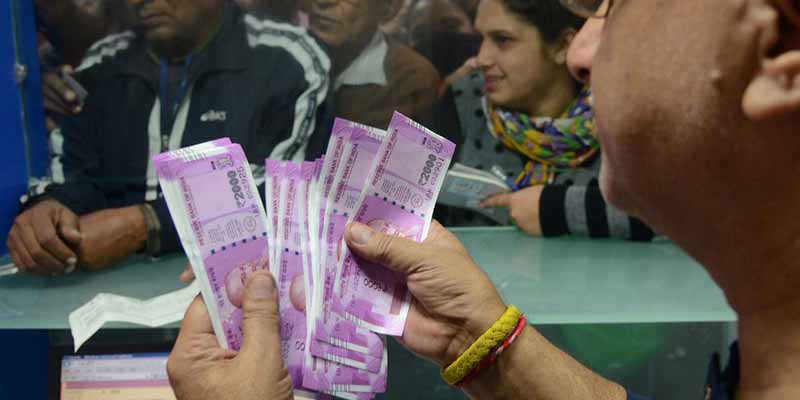- India
- Apr 01
Explainer / Currency management
• Reserve Bank of India governor Shaktikanta Das dedicated Varnika, the ink manufacturing unit of Bharatiya Reserve Bank Note Mudran Private Limited (BRBNMPL), to the nation in Mysuru.
• He stressed on achieving 100 per cent self-sufficiency in banknote manufacturing in the near future.
• BRBNMPL, a wholly-owned subsidiary of the RBI, has set up Varnika with an annual ink manufacturing capacity of 1,500 MT to enhance the security of banknotes.
• It is a boost to the ‘Make in India’ initiative and ensures that the entire requirement of banknote printing inks is produced in-house.
• Varnika manufactures Colour Shift Intaglio Ink (CSII) and meets the entire requirements of banknote printing presses in India, which has resulted in cost efficiency and self-sufficiency in banknote ink production.
• Further, commissioning of varnish plant for manufacturing different types of varnishes and production of medium and special additives indigenously in-house has helped the currency ecosystem in achieving two-fold goals of cost efficiency and reduced import dependency.
Currency management
• The Indian currency is called the Indian Rupee (INR). The symbol of the Indian Rupee is ₹. The design resembles both the Devanagari letter ‘₹’ (ra) and the Latin capital letter ‘R’, with a double horizontal line at the top.
• The banknote printing started in India in 1928 with the establishment of India Security Press in Nashik. Until the commissioning of the Nashik press, the currency notes were printed from Thomas De La Rue Giori of the United Kingdom.
• The second banknote printing press was established in Dewas (Madhya Pradesh) in 1975.
• With the growth in population and economic activity, the demand for banknotes has been steadily increasing. To bridge the demand and supply gap, the government decided to establish two banknote printing presses, one at Mysuru and the other at Salboni (West Bengal).
• The Reserve Bank has the sole authority to issue banknotes in India. Reserve Bank, like other central banks the world over, changes the design of banknotes from time to time.
• Currency in Circulation (CiC) includes banknotes and coins.
• The value and volume of banknotes in circulation increased by 16.8 per cent and 7.2 per cent, respectively, during 2020-21.
• In value terms, the share of Rs 500 and Rs 2,000 banknotes together accounted for 85.7 per cent of the total value of banknotes in circulation as on March 31, 2021.
• The total value of coins in circulation increased by 2.1 per cent in 2020-21, while the total volume increased by only 1 per cent.
Department of Currency Management
• The Department of Currency Management has the responsibility of administering the functions of currency management, a core function of the Reserve Bank in terms of the Reserve Bank of India Act, 1934.
• Currency management essentially relates to issue of notes and coins and retrieval of unfit notes from circulation.
• This work is performed through 18 issue offices of the Reserve Bank and a wide network of currency chests, repositories and small coin depots managed by banks and government treasuries.
• The Department receives notes from four currency note printing presses.
Printing of notes
• Banknotes are printed at four currency presses, two of which are owned by the government through Security Printing and Minting Corporation of India Ltd. (SPMCIL) and two are owned by the Reserve Bank, through its wholly owned subsidiary Bharatiya Reserve Bank Note Mudran Private Ltd. (BRBNMPL).
• The currency presses of SPMCIL are Bank Note Press (BNP) in Dewas and Currency Note Press (CNP) in Nashik.
• The two presses of BRBNMPL are at Mysuru and Salboni.
• Coins are minted in four mints owned by the government. The mints are located at Mumbai, Hyderabad, Calcutta and Noida.
• The coins are issued for circulation only through the Reserve Bank in terms of Section 38 of the RBI Act.
The Department addresses policy and operational issues relating to:
• Designing of banknotes.
• Forecasting demand for notes and coins.
• Ensuring smooth distribution of banknotes and coins throughout the country and retrieval of unfit notes and uncurrent coins from circulation.
• Ensuring the integrity of banknotes.
• Administering the RBI (Note Refund) Rules.
• Reviewing/rationalising the work systems/procedures at the issue offices on an ongoing basis.
• Dissemination of information on currency related matters to the general public.
Bharatiya Reserve Bank Note Mudran Private Limited (BRBNMPL)
Bharatiya Reserve Bank Note Mudran Private Limited (BRBNMPL) was established the RBI as its wholly owned subsidiary on February 3, 1995 with a view to augmenting the production of banknotes in India to enable the RBI to bridge gap between the supply and demand for banknotes in the country. BRBNMPL has been registered as a private limited company under the Companies Act, 1956 with its registered and corporate office situated in Bengaluru. The company manages two presses
Security Printing and Minting Corporation of India Ltd (SPMCIL)
Security Printing and Minting Corporation of India Ltd (SPMCIL), a Miniratna Category-I, Schedule-‘A’ Central Public Sector Enterprise (CPSE) was incorporated on January 13, 2006 to manage four government mints, two currency presses (Dewas & Nashik), two security presses and one security paper mill, which were earlier being managed by the ministry of finance directly.
Manorama Yearbook app is now available on Google Play Store and iOS App Store



